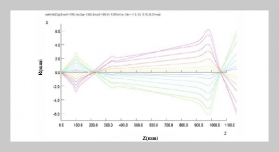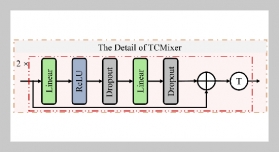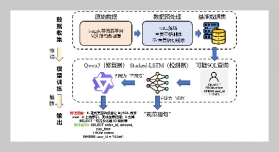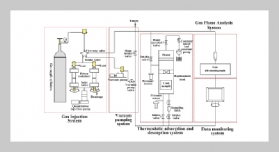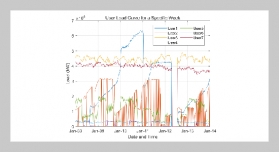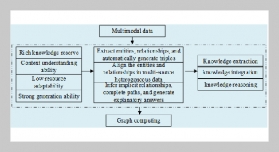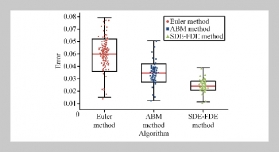REFERENCES
- [1] M. A.A. Aldahdooh, A. Jamrah, Ali Alnuaimi, M. I. Martini, M. S.R. Ahmed, and A. S.R. Ahmed. Influence of various plastics-waste aggregates on properties of normal concrete. Journal of Building Engineering, 17:13–22, may 2018.
- [2] Youcef Ghernouti, Bahia Rabehi, Brahim Safi, and Rabah Chaid. Use of Recycled Plastic Bag Waste in Concrete. Journal of International Scientific Publications: Materials, Methods and Technologies, 8:480–487, 2009.
- [3] Martina Záleská, Milena Pavlíková, Jaroslav Pokorný, Ondrˇej Jankovský, Zbyšek Pavlík, and Robert Cˇ erný. Structural, mechanical and hygrothermal properties of lightweight concrete based on the application of waste plastics. Construction and Building Materials, 180:1–11, 2018.
- [4] Claudiu Aciu, Dana Adriana Ilutiu-Varvara, Daniela Lucia Manea, Yvette Anna Orban, and Florin Babota. Recycling of plastic waste materials in the composition of ecological mortars. In Procedia Manufacturing, volume 22, pages 274–279, 2018.
- [5] Daud Mohamad, Salmia Beddu, Siti Nabihah Sadon, Nur Liyana Mohd Kamal, Zarina Itam, Khodrulnadiah Mohamad, and Wani Mohd Sapua. Self-curing Concrete using Baby Diapers Polymer. Indian Journal of Science and Technology, 10(4), 2017.
- [6] Salmia Beddu, Daud Mohamad, Fadzli Mohamed Nazri, Siti Nabihah Sadon, and Mohamed Galal Elshawesh. Properties of Self-curing High Strength Concrete by using Baby Polymer Diapers. In MATEC Web of Conferences, volume 203, 2018.
- [7] Siswanti Zuraida and Sastita Pratiwi. Panel Komposit Limbah Serbuk Kayu sebagai Alternatif Komponen Bangunan Ramah Lingkungan. Journal of Applied Science (JAPPS), 2(1):061–066, mar 2020.
- [8] Andrie Harmaji, Siswanti Zuraida|, and Siswanti Zuraida. Green Construction Material: Polyethylene Waste Reinforce Concrete for Panel Application. International Journal of Built Environment and Scientific Research, 03, 2019.
- [9] Ryan Heri Setyawan. KARAKTERISTIK KOMPOSIT SERAT ECENG GONDOK DENGAN FRAKSI VOLUME 1520PEREDAM SUARA. 9(2):10, 2016.
- [10] Bartolomeo Coppola, Luc Courard, Frédéric Michel, Loredana Incarnato, Paola Scarfato, and Luciano Di Maio. Hygro-thermal and durability properties of a lightweight mortar made with foamed plastic waste aggregates. Construction and BuildingMaterials, 170:200–206, 2018.
- [11] Alireza Kharazipour and Ursula Kües. Recycling of Wood Composites and Solid Wood Products, Wood Composite and Wood Recycling. In Wood production, wood technology, and biotechnological impacts. Molecular Wood Biotechnology, Institute of Forest Botany, Georg-August-University, Göttingen. 2007.
- [12] IEA. Energy Technology Perspectives 2016: Towards Sustainable Urban Energy systems. International Energy Agency (IEA), page 418, 2016.
- [13] IPCC. Introduction BT - IPCC Guidelines for National Greenhouse Gas Inventories. In IPCC Guidelines for National Greenhouse Gas Inventories, number 1, pages 1.1–1.21. 2006.
- [14] Robbie M. Andrew. Global CO2 emissions from cement production. Earth System Science Data, 10(1):195–217, jan 2018.
- [15] Changhai Peng. Calculation of a building’s life cycle carbon emissions based on Ecotect and building information modeling. Journal of Cleaner Production, 112:453–465, 2016.
- [16] ISO 14040. Environmental Management —life cycle assessment–principles and framework: International Organization for Standardization. 2006.
- [17] Elena G. Dascalaki, Poulia Argiropoulou, Constantinos A. Balaras, Kalliopi G. Droutsa, and Simon Kontoyiannidis. Analysis of the embodied energy of construction materials in the life cycle assessment of Hellenic residential buildings. Energy and Buildings, 232, 2021.
- [18] Xi Chen, Chenyang Shuai, Ya Wu, and Yu Zhang. Analysis on the carbon emission peaks of China’s industrial, building, transport, and agricultural sectors. Science of the Total Environment, 709, 2020.
- [19] Joost G Vogtlander. A Quick Reference Guide To Lca Data And Eco-Based Materials Selection. Delft Academic Press: Netherland, 2015.
- [20] Joost G. Vogtlander. LCA: A Practical Guideline For Students, Designers And Business Managers. Delft Academic Press: Netherland, 2017.
- [21] Joan Carreras, Dieter Boer, Luisa F. Cabeza, Laureano Jiménez, and Gonzalo Guillén-Gosálbez. Eco-costs evaluation for the optimal design of buildings with lower environmental impact. Energy and Buildings, 119:189–199, 2016.
- [22] Siswanti Zuraida and Dewi Larasati. The Assessment of Marginal Prevention Costs on Bamboo Preservation Method. Procedia Environmental Sciences, 28:789–798, 2015.
- [23] S. Zuraida and D. Larasati. Eco-Costs Life Cycle Assessment of Traditional Housing in Indonesia: The Case of West Java. Proceeding of International Symposium of Architectural Interchanges in Asia (ISAIA), 2016.
- [24] S. Zuraida and D. Larasati. Economic Analysis of Bamboo Preservation Method in Indonesia. Proceeding of ASEAN Bamboo Symposium, 2016.
- [25] S. Zuraida and D. Larasati. Environmental Impacts Of Bamboo Preservation Methods As An Assessment Of Sustainable Material. Proceeding of International Seminar On Partnership For Sustainable Housing And Urban, Surabaya, Indonesia, 2015.
- [26] Eirik Resch, Carine Lausselet, Helge Brattebø, and Inger Andresen. An analytical method for evaluating and visualizing embodied carbon emissions of buildings. Building and Environment, 168, jan 2020.
- [27] Yuni Sri Wahyuni. Pengembangan Strategi Mitigasi Dampak Lingkungan Melalui Pertimbangan Nilai Embodied Energy Material Pada Pembangunan Rumah Sederhana. Disertasi: Insititut Teknologi Bandung, Indonesia, 2017.
- [28] Xiaocun Zhang and Xueqi Zhang. A subproject-based quota approach for life cycle carbon assessment at the building design and construction stage in China. Building and Environment, 185, nov 2020.
- [29] Luisa F. Cabeza, Laura Boquera, Marta Chàfer, and David Vérez. Embodied energy and embodied carbon of structural building materials: Worldwide progress and barriers through literature map analysis. Energy and Buildings, 231, 2021.
- [30] Hongmei Zheng, Aimin Li, Fanxin Meng, and Gengyuan Liu. Energy flows embodied in China’s interregional trade: Case study of Hebei Province. Ecological Modelling, 428, jul 2020.
- [31] Bin Liu, Dedong Wang, Youquan Xu, Chunlu Liu, and Mark Luther. Embodied energy consumption of the construction industry and its international trade using multi-regional input–output analysis. Energy and Buildings, 173:489–501, 2018.
- [32] Andriel Evandro Fenner, Charles Joseph Kibert, Jiaxuan Li, Mohamad Ahmadzade Razkenari, Hamed Hakim, Xiaoshu Lu, Maryam Kouhirostami, and Mahya Sam. Embodied, operation, and commuting emissions: A case study comparing the carbon hotspots of an educational building. Journal of Cleaner Production, 268, 2020.
- [33] Mehdi Robati, Daniel Daly, and Georgios Kokogiannakis. A method of uncertainty analysis for whole-life embodied carbon emissions (CO2-e) of building materials of a net-zero energy building in Australia. Journal of Cleaner Production, 225:541–553, 2019.
- [34] Yujie Cang, Liu Yang, Zhixing Luo, and Nan Zhang. Prediction of embodied carbon emissions from residential buildings with different structural forms. Sustainable Cities and Society, 54, mar 2020.
- [35] S Zuraida, Y S Wahyuni, and D Larasati. Life cycle assessment of low costs housing in Indonesia. In IOP Conference Series: Materials Science and Engineering, volume 669. Institute of Physics Publishing, nov 2019.
- [36] Zhikun Ding, Shan Liu, Liwei Luo, and Longhui Liao. A building information modeling-based carbon emission measurement system for prefabricated residential buildings during the materialization phase. Journal of Cleaner Production, 264, 2020.
- [37] Xiaocun Zhang, Kaihua Liu, and Zihua Zhang. Life cycle carbon emissions of two residential buildings in China: Comparison and uncertainty analysis of different assessment methods. Journal of Cleaner Production, 266, 2020.
- [38] Mengxue Lu and Joseph Lai. Review on carbon emissions of commercial buildings, 2020.
- [39] Jonggeon Lee, Sungho Tae, and Rakhyun Kim. A Study on the analysis of CO2 emissions of apartment housing in the construction process. Sustainability (Switzerland), 10(2), jan 2018.
- [40] Lei Luo and Yiyu Chen. Carbon emission energy management analysis of LCA-Based fabricated building construction. Sustainable Computing: Informatics and Systems, 27, 2020.
- [41] Yuanyuan Gong, Deyong Song, and Marc A Rosen. Life Cycle Building Carbon Emissions Assessment and Driving Factors Decomposition Analysis Based on LMDI-A Case Study of Wuhan City in China. Sustainability,7(12):16670–16686, 2015.


![Eco-Cost Concept [19]. A Calculation Approach of Embodied Energy, Carbon Emission and Eco-Costs on Waste Recycled Composite Materials](/images/article_images/25/25_1_11.jpg)
